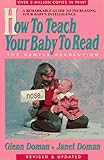A few years ago when my kid was in a playgroup in Hong Kong, I noticed the teachers using flash cards with the toddlers. They were large A4 sized flash cards with bold print, sporting pictures on one side and text on the other.
The teacher went through the flash cards at full speed, turning the card over and saying “nose”, “nose”, reading the text and labeling the corresponding picture.
I groaned. This appeared to be academic prodding at full force. And with toddlers, who had zero attention span. I looked around at the other parents, hoping to engage in a collective eye roll.
Fast forward to a few years later, while expecting a child with Down syndrome. I was scouring internet forums for information, looking for what to expect and how to give my baby the best chances to thrive.
 Benefits Of Reading
Benefits Of Reading
Reading to children, as early as possible, is well documented as a way to promote social, emotional, and cognitive development. Stories literally open up windows into new worlds and simultaneously offer kids a fun way to learn about everything from potty training to respect.
We’ve read to our kids from day 1, incorporating it into the daily nighttime routine. Some of our favorite toddler books have stood the test of time and prompted questions and (the best) nighttime giggles.
Just telling your kids flat out how the world works and what they should do loses its effect after awhile. Kids want to learn and explore on their own, which is why the ability to read is also such a powerful tool.
Learning To Read
My parents were immigrants who spoke English as a second language, and my first language was Chinese. I could read about 300 words in Chinese by the age of 4.
Chinese is an entirely sight word language, meaning toddlers learn how to read quickly by memorizing the characters. By contrast, typically English is taught these days phonetically, by spelling out the sounds of the words. The only problem with English is that there are actually alot of exceptions (consider how “great” and “eat” both end in “eat”, which are pronounced differently).
I was read to in English, probably mostly by my older sister. Looking back I probably naturally picked up the language the same way I picked up Chinese, by remembering the words. By the time I was in kindergarten I was reading at a 4th grade level.
Most parents assume kids will learn to read in school, as I did with my first child. I didn’t want to be too intense, and in between teaching my child 3 languages and traveling constantly internationally, I didn’t pay that much attention to her reading ability.
Teaching Babies How To Read
For my special needs child though, I was worried about delays. I came across the Glen Doman method that was developed to specifically help special needs children. This was actually the method my teacher friend had used to teach her 4 year old kid how to read. It can be applied to the general population.
The problem with this method is that it’s rather labor intensive to write or print your own flashcards. As I looked for ways to save time, I came across Natalie Hale from Special Reads For Special Needs. Over the last 20 years she’s developed a teaching method called “Fast Flash” which relies heavily on this right brain technique. She’s also created a set of flash cards and books to help emergent readers.
Engaging Your Child
Toddlers really do have a short attention span, so one of the keys of this reading method is to “flash” the cards very quickly to your child, for not more than a second. Anecdotally, I’ve seen parents with a high degree of success with this method even from birth to 5, and certainly after.
To really prime a child Natalie suggests the “Sandwich-style” method, which means sandwiching books between flashcards. The flashcard words are more memorable when they are included in the books and motivate your child to learn them.
We received two of these books to review, “Look”, and “I Want Pizza.”
“Look” familiarizes your child with simple, most commonly used words in children’s books. The text is large so that your children can easily follow along. Most children’s books have text that is too small for a child’s vision.
“I Want Pizza” follows a kid who wants to eat pizza for breakfast, lunch, and dinner. The simple and colorful illustrations and storyline will probably make your kid smile.
The key is still the large text that most children’s books lack.
These fun books along with flash cards pave the way for emergent readers to get started! We’re looking forward to putting both our young readers on this system and will report back with results.
Have any of you tried this? Any thoughts on teaching your children how to read?


 Benefits Of Reading
Benefits Of Reading




